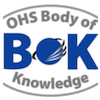Chapter 28: Mechanical Plant
Abstract
Machinery, equipment, appliances or powered tools that can be generically grouped as ‘plant’ are ubiquitous in most workplaces. While many hazards are associated with such plant, this chapter focuses on the hazards associated with the moving parts of machinery which have the potential to cause injury by crushing, shearing, entangling, trapping, hitting or abrading, or through the uncontrolled release of pressure. Most of these ‘kinetic energy’ or ‘potential energy’ related injuries are associated with fixed plant; however, a significant number of these injuries arise from use of powered equipment and tools in workshop, kitchen, office and garden workplaces. Identifying these hazards and assessing the associated risk requires knowledge of how kinetic and potential energy behave, as well as factors at the machine-human interface that may lead to loss of control of the energy. Control strategies for these hazards have evolved from the simple approach of guarding dangerous machine parts to a more sophisticated systematic approach involving: elimination or minimisation of the risk through design; engineering controls to prevent access to hazardous zones or to protect workers who have to access hazardous zones; administrative controls, including provision of information, training and instruction; and procedural approaches, such as Permit To Work and lockout/tagout systems. In developing or
monitoring controls for mechanical plant, generalist Occupational Health and Safety (OHS) professionals must remain aware of the ways such protections can be defeated or break down. Ensuring safety of mechanical plant has become more complex with technological developments including automation and artificial intelligence and OHS professionals need to be able to engage with engineers, ergonomists and other technical experts.
Keywords: plant, machinery, equipment, guard, energy, injury, safety
First year of publication: 2012
Current Version : 2020
Chapter 28: Mechanical Plant
Table of contents
Key thinkers and resources
| 1 | Introduction |
| 2 | Historical perspective |
| 3 | Extent of the problem |
| 4 | Understanding plant hazards |
| 4.1 | An energy approach |
| 4.2 | Injury process and outcomes |
| 4.3 | Risk factors |
| 4.4 | Human-machine interface |
| 4.5 | The impact of technology |
| 4.6 | Section summary |
| 5 | Legislation and standards |
| 5.1 | Legislation |
| 5.2 | Standards |
| 6 | Control of hazards associated with plant |
| 6.1 | Elimination or minimisation through design |
| 6.2 | Engineering controls: Guarding to prevent or control access |
| 6.3 | Protection of personnel entering hazardous zones |
| 6.4 | Defeat of safeguarding systems |
| 6.5 | Administrative controls |
| 6.6 | Personal protective equipment |
| 7 | Implications for OHS practice |
| 8 | Summary |
| References |
Purchase the AUDIO chapter here through AIHS
OR

Roger Lim MIEAust CPEng NER APEC Engineer IntPE(Aus) COHSProf
Principal Consulting Engineer, Plant Safety Solutions Pty Ltd
Roger is a highly experienced engineer with post graduate qualification in robotics. With over 15 years’ experience as a Senior Engineer in Plant Safety with the Victorian WorkCover Authority and its predecessors, Roger has been working in the private industry consulting in plant safety for over 20 years, specialising in machine safety. He represents Engineers Australia in AS4024 machine safety committee. Roger often appears as an expert witness in courts for accident investigations involving mechanical plant and safety of control systems.

Tony Payne BE(Mech), GDipOHM, GDipErg, MIEAust, CPEng, CPE, CPMSIA
Ergonomics Engineer Director, Payne Consulting Services Pty Ltd
Tony is a safety and ergonomics professional with over 30 years experience working as s an employee, researcher and more recently as an independent consultant. For the last 10 years he has been the Human Factors and Ergonomics Society of Australia representative on the Standards Australia Committee SF-041 developing the current standards on machine safety. He continues to provide consulting services and training to organisations in both the Government and private sectors.
Learning Outcomes: Physical Hazards: Plant
The OHS Body of Knowledge takes a conceptual approach which enables it to be applied in different contexts and frameworks.
To optimise its value for education and professional development learning outcomes have been developed for each technical chapter in the Body of Knowledge.
The learning outcomes as described give an indication of what should be the capabilities of an OHS professional; it is up to those developing OHS education programs, OHS professionals planning their CPD or recruiters or employers selecting or developing people for the OHS function to consider the required breadth vs. depth .
Please read the section on using the learning outcomes before delving into the leaning outcomes of the individual chapters.
The numbers against each learning outcome refer to the chapter number of the BOK download page. No learning outcomes have been developed for the chapters considered introductory or underpinning knowledge (that is chapters 1, 2, 3, 4, 5, 6, 7, 1, .13, 14, 15.)
Webinars
AIHS Webinar: Safety of machinery – Introduction to risk assessment
Machines help improve production efficiency in the workplace, however, their moving parts, sharp edges, and hot surfaces often cause serious workplace injuries such as crushed fingers or hands, amputations, burns, blindness, or even death. Safeguards are essential to protect workers from injury. This presentation introduces AS/NZS4024.1201 General principles for design—Risk assessment and risk reduction and provides a practical demonstration of the risk assessment process as applied to machinery.
Date: 2020
Presenter: Adam Hillman
Source: https://youtu.be/zr9swAcJLLo

